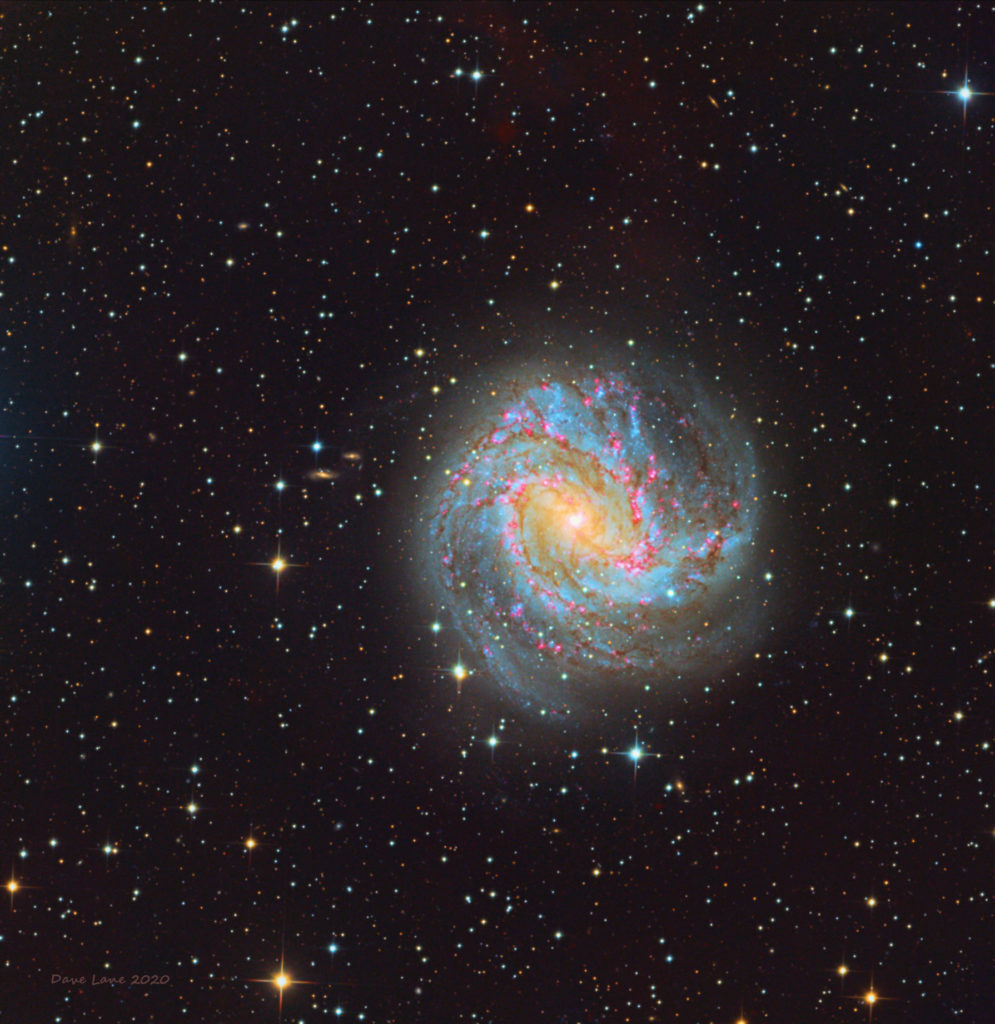Sky Report July 27 – August 2

Comet NEOWISE remains visible in the early evening sky to the left of the Big Dipper. It was closest to the sun on July 3 and closest to the earth on the 23rd, and it’s now fading as it leaves the earth and sun behind. According to predictions, it might still be visible to the naked eye, but you’ll probably need binoculars, and if you don’t have binoculars buy a pair! (I recommend 7X50 for sky-watching; an adequate pair is under $50 at sporting goods stores and online). With binoculars you’ll see a short tail flowing up and away from a bright icy nucleus. Google “Comet NEOWISE” for current observing conditions including sky maps to locate it. On the 29th, 30th, and 31st the comet passes the edge of the Coma cluster, a group of 40 stars about 300 light years from earth that is best appreciated in binoculars. Unfortunately bright moonlight interferes this week.
Almost opposite the comet in the sky are the two bright planets Jupiter and Saturn, both in Sagittarius. Jupiter is the brighter of the two, but both are brighter than any nearby stars. The full moon is below and almost between them on the night of the 1st in a pretty triangle.
Orange Mars is brighter than any star, and it rises at midnight. Mars is presently 60 million miles from earth.
Almost last but far from least is brilliant Venus, which rises in the east by 4 AM. At 4:30 Venus is high enough to see it well while Mars is high in the south and Jupiter and Saturn are about to set in the southwest — and the four brightest planets span the sky.
Last and definitely least is little Mercury, which you might see very low in the east-northeast at 5:30 AM as the sky is brightening with the approaching dawn. You’ll definitely need a very low horizon to spot Mercury, which is as bright as the brightest stars.
The long Delta Aquariids Meteor Shower peaks on the 29th, but it’s a weak shower with perhaps one meteor every three minutes at best, all radiating from the direction of the constellation Aquarius, which lies roughly midway between Saturn and Mars. The best time to look is after midnight, but fortunately the nights are warm. A good reference is https://earthsky.org/?p=159138. A much better shower is the Perseids in only two weeks.
The Sky Report is presented as a public service by the Stellar Vista Observatory, a nonprofit organization based in Kanab, Utah, which provides opportunities for people to observe, appreciate, and comprehend our starry night sky. Additional information is at www.stellarvistaobservatory.org. Send questions and comments to
John@StargazingAdventures.org.






Comments are closed.